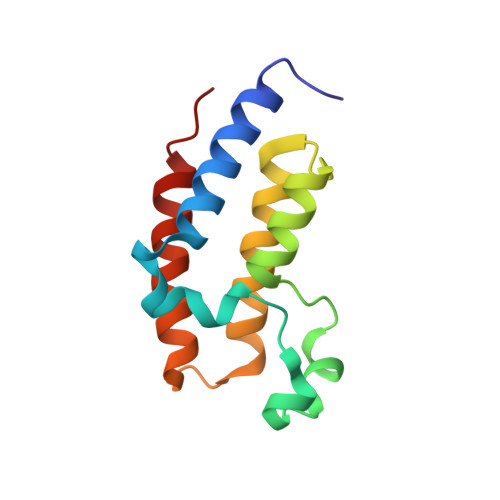A Novel Phenanthridionone Based Scaffold As a Potential Inhibitor of the BRD2 Bromodomain: Crystal Structure of the Complex
Tripathi, S., Mathur, S., Deshmukh, P., Manjula, R., Padmanabhan, B.(2016) PLoS One 11: e0156344-e0156344
- PubMed: 27243809
- DOI: https://doi.org/10.1371/journal.pone.0156344
- Primary Citation of Related Structures:
5IBN, 5IG6 - PubMed Abstract:
Bromodomain containing proteins recognize the level of histone acetylation and regulate epigenetically controlled processes like gene transcription and chromatin modification. The BET (bromodomain and extra-terminal) family proteins, which are transcriptional co-regulators, have been implicated in the pathogenesis of cancer, neurodegenerative disorders, and defects in embryonic stem cell differentiation. Inhibitors selectively targeting the BET bromodomains can pave the path for new drug discovery against several forms of major diseases. By a rational structure-based approach, we have identified a new inhibitor (NSC127133) of the second bromodomain (BD2) of the BET family protein BRD2 using the NCI Diversity Set III library. A high-resolution crystal structure of the BRD2-BD2 in complex with this compound and in apo- form is refined to 0.91 and 0.94 Å, respectively. The compound, which is a phenanthridinone derivative, binds well to the acetyl-lysine binding pocket of BD2 and displays significant hydrophobic and hydrophilic interactions. Moreover, the atomic resolution data obtained in this study allowed us to visualize certain structural features of BD2 which remained unobserved so far. We propose that the discovered compound may be a potential molecule to develop a new library for inhibiting the BRD2-BD2 function.
Organizational Affiliation:
Department of Biophysics, National Institute of Mental Health and Neurosciences (NIMHANS), Hosur Road, Bangalore, 560029, India.

















